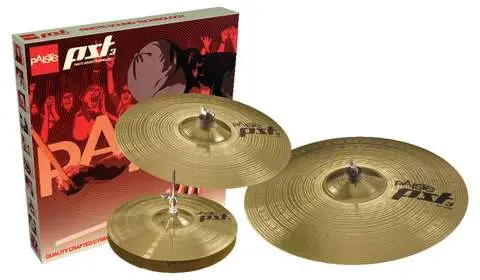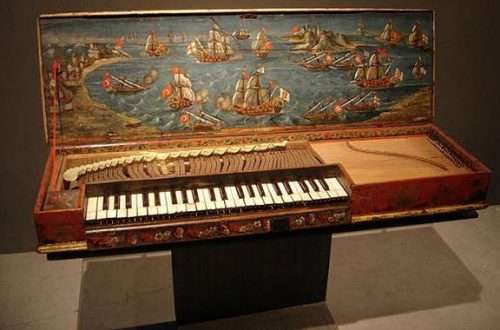
How to choose a cello
Contents
Cello (it. violoncello) bowed musical instrument with four strings, shaped like a large violin. Medium in register and size between a violin and a double bass.
The appearance of the cello dates back to the beginning of the 16th century. Initially, it was used as a bass instrument to accompany singing or playing an instrument of a higher register . There were numerous varieties of the cello, which differed from each other in size, number of strings, and tuning (the most common tuning was a tone lower than the modern one).
In the 17th-18th centuries, the efforts of the outstanding musical masters of the Italian schools (Nicolo Amati, Giuseppe Guarneri, Antonio Stradivari, Carlo Bergonzi, Domenico Montagnana, and others) created a classical cello model with a firmly established body size. At the end of the 17th century, the first solo works for cello appeared – sonatas and ricercars by Giovanni Gabrieli. By the middle of the 18th century, the cello began to be used as a concert instrument, owing to its brighter, fuller sound and improving performance technique, finally displacing the viola da gamba from musical practice.
The cello is also part of the symphony orchestra and chamber ensembles. The final assertion of the cello as one of the leading instruments in music occurred in the 20th century through the efforts of the outstanding musician Pau Casals. The development of performance schools on this instrument has led to the emergence of numerous virtuoso cellists who regularly perform solo concerts.
In this article, the experts of the store “Student” will tell you how to choose the cello that you need, and not overpay at the same time.
Cello construction
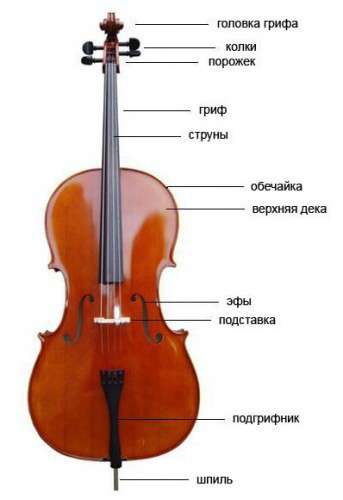
Pegs or peg mechanics are parts of the cello fittings that are installed to tension the strings and tune the instrument.
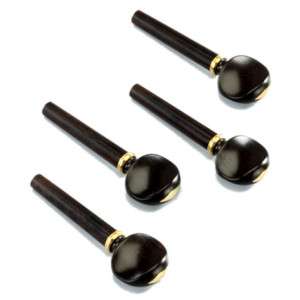
Cello pegs
Fretboard – an elongated wooden part, to which the strings are pressed when playing to change the note.
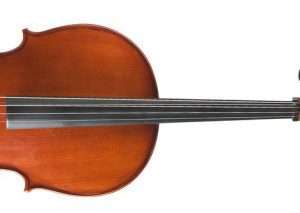
Cello fretboard
Shell – the side part of the body (bent or composite) of musical instruments.
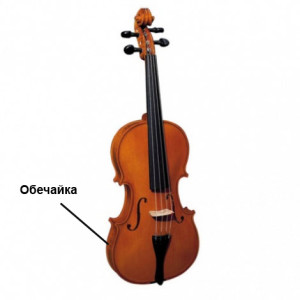
shell
The soundboard is the flat side of the body of a stringed musical instrument used to amplify the sound.
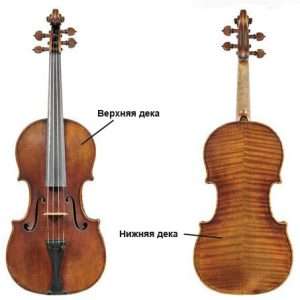
Top and bottom deck
Resonator F (efs) – holes in the form of the Latin letter “f”, which serve to amplify the sound.

efa
Nut (stand) – a detail of stringed instruments that limits the sounding part of the string and raises the string above the neck to the required height. To prevent the strings from shifting, the nut has grooves corresponding to the thickness of the strings.
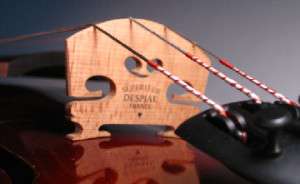
threshold
The fingerboard is responsible for the sound of the strings. The fingerboard is made of solid wood and is fastened by means of a sinew or synthetic loop for a special button.
Spire – a metal rod on which the cello rests .
cello size
When choosing a cello , it is necessary to take into account an important point – the coincidence of the physique and dimensions of a person with the instrument on which he will play. There are even people who, due to their build, simply cannot play the cello: if they have very long arms or large meaty fingers.
And for petite people, you need to select a cello of special sizes. There is a certain gradation of cellos, which is based on the age of the musician and body type:
| Arm length | Growth | Age | Body length | cello size |
| 420-445 mm | 1.10-1.30 m | from 4 – 6 | 510-515 mm | 1/8 |
| 445-510 mm | 1.20-1.35 m | from 6 – 8 | 580-585 mm | 1/4 |
| 500-570 mm | 1.20-1.45 m | from 8 – 9 | 650-655 mm | 1/2 |
| 560-600 mm | 1.35-1.50 m | from 10 – 11 | 690-695 mm | 3/4 |
| from 600 mm | from 1.50 m | from 11 | 750-760 mm | 4/4 |
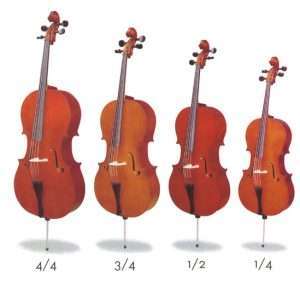
Cello Dimensions
Tips from the store “Student” for choosing a cello
Here is a must-have set of tips from the pros to follow when choosing a cello:
- manufacturing country –
Russia – only for beginners
– China – you can find a completely working (training) instrument
– Romania, Germany – instruments that you can perform on stage - fingerboard : it should not have “burrs” so as not to experience discomfort during lessons and so as not to carry the violin immediately to the master
- the thickness and color of the varnish – at least by eye, so that there is a natural color and density.
- tuning pegs and cars on the neck (this is the bottom fastener of the strings) should rotate freely enough without additional physical effort
- the stand should not be bent when viewed in profile
- the size of the tool should be suitable for your physical structure. The convenience of playing on it depends on this, which is important.
Choosing a cello bow
- In the loose state, it should have a strong deflection in the middle, i.e., the cane should touch the hair.
- Hair is preferably white and natural (horse). Black synthetics are acceptable, but only for the very initial stage of mastering the instrument.
- Check the screw – pull the hair until the cane is straightened and release. The screw should turn without effort, the thread should not be stripped (a very common occurrence even with new factory bows).
- Pull the hair until the reed is straightened and lightly hit the fret or finger – the bow should not:
– bounce like crazy;
– do not bounce at all (bend to the cane);
– loosen the tension after a few hits. - Look with one eye along the cane – there should be no transverse curvature visible to the eye.
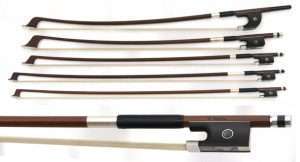
Examples of modern cellos
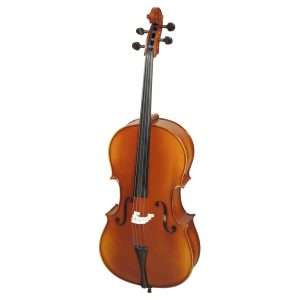 Hora C120-1/4 Student Laminated | 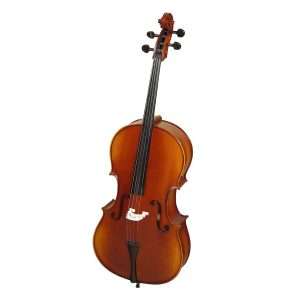 Hora C100-1/2 Student All Solid |
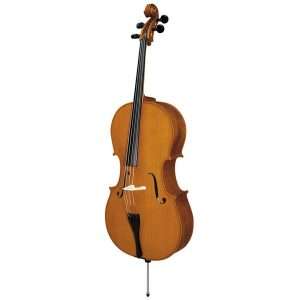 Strunal 4/4weA-4/4 | 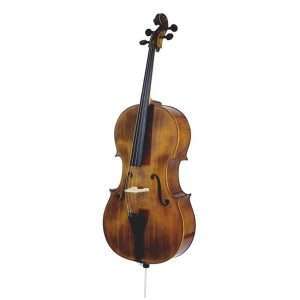 Strunal 4/7weA-4/4 |



